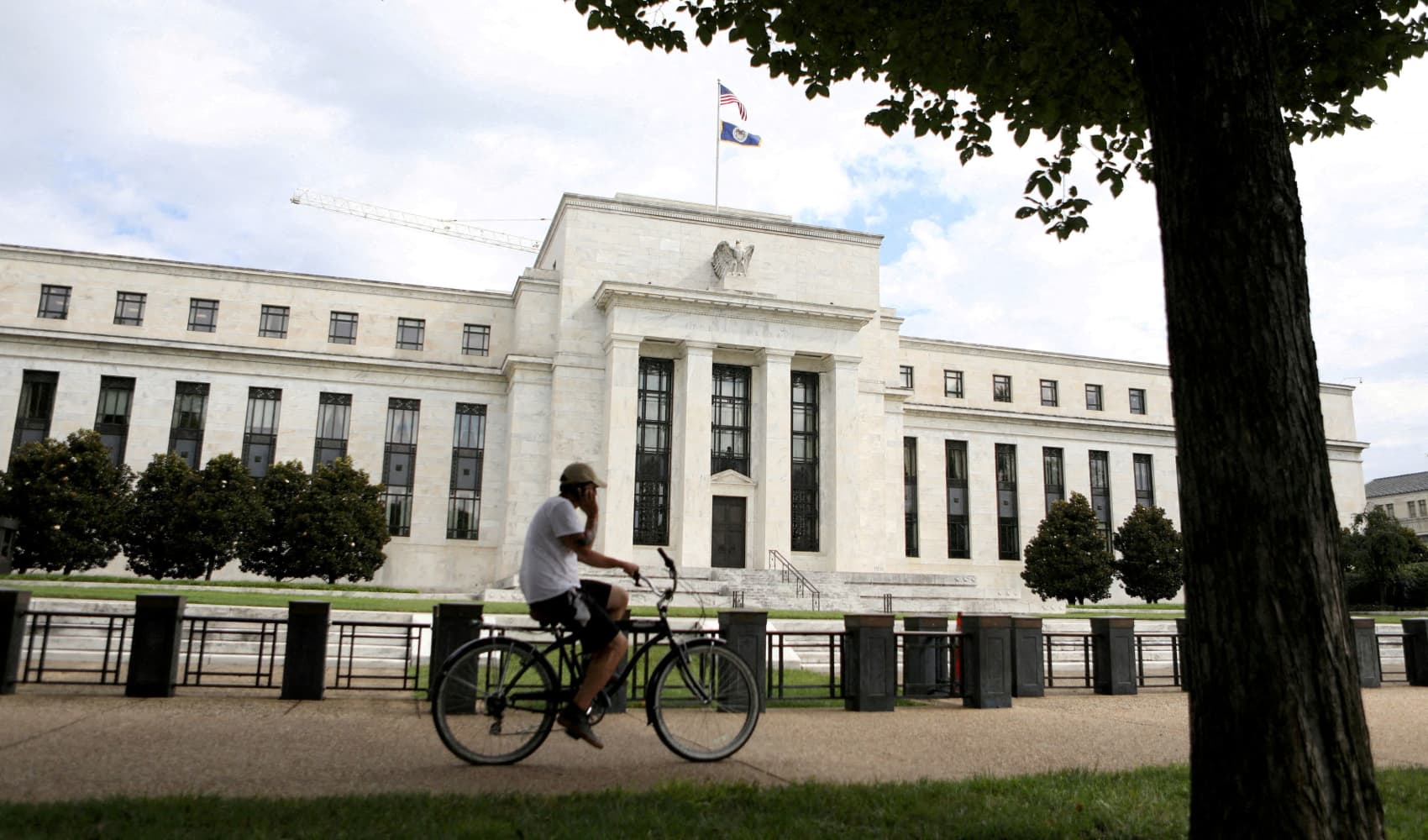Fed Holds Steady: How It Impacts Your Borrowing Costs
Will the Fed Hold Steady? What It Means for Your Wallet
Introduction: The Waiting Game with Interest Rates
The air is thick with anticipation, isn't it? Like waiting for a pot to boil, we're all wondering what the Federal Reserve will do with interest rates this week. Amidst a landscape of economic data that's more mixed than a fruit salad, and with the backdrop of ongoing global uncertainties, most experts believe the Fed is likely to keep its benchmark short-term borrowing rate unchanged. But what does that actually mean for you, the everyday consumer? Let's dive in and decode the implications for your borrowing costs.
The Fed's Balancing Act: Inflation vs. Economic Growth
The Fed's job is like walking a tightrope. On one side, you have inflation – rising prices that erode your purchasing power. On the other side, you have economic growth – the engine that drives job creation and prosperity. The Fed's mandate is to keep both of these in check, ensuring stable prices and a healthy economy.
The Inflation Factor: Still a Concern?
Even though inflation has cooled down from its peak, it's still lingering above the Fed's target. This means they have to be cautious about cutting rates too quickly, as that could reignite inflationary pressures. Think of it like adding fuel to a fire – a little bit can be helpful, but too much can cause it to rage out of control.
Growth Concerns: Navigating Uncertain Waters
The global economic outlook remains uncertain, with trade tensions and geopolitical risks casting a shadow over growth prospects. A slowdown in global demand could impact U.S. exports and overall economic activity, making the Fed hesitant to raise rates further. They need to ensure they aren't inadvertently stifling growth.
Impact on Credit Cards: A Relatively Stable Landscape
Your credit card rates are directly tied to the prime rate, which in turn is influenced by the Fed's benchmark rate. If the Fed holds steady, don't expect any major changes in your credit card APRs. However, remember that credit card rates are already relatively high, so it's always a good idea to shop around and see if you can find a better deal or focus on paying down your balances.
Minimizing Credit Card Costs: Strategies for Smart Spending
- Pay off your balance in full each month: This avoids accruing interest charges altogether.
- Consider a balance transfer: If you have a high-interest credit card, transferring the balance to a card with a lower rate can save you money.
- Negotiate with your credit card issuer: It never hurts to ask for a lower interest rate!
Mortgage Rates: A Gradual Shift, Not a Sudden Plunge
Mortgage rates are more complex, influenced by a variety of factors, including the 10-year Treasury yield. While the Fed doesn't directly control mortgage rates, its actions certainly influence them. A decision to hold steady suggests rates will likely remain in a relatively stable range, although they could still fluctuate based on other economic news.
The Long-Term View: Locking in a Favorable Rate
If you're planning to buy a home or refinance your mortgage, keep a close eye on interest rate trends. While a single Fed meeting might not cause a dramatic shift, it's important to consider the overall trajectory and long-term outlook.
Auto Loans: Steady as She Goes
Similar to mortgages, auto loan rates are also impacted by broader economic conditions and investor sentiment. A steady Fed typically translates to a relatively stable environment for auto loan rates. However, your credit score and the specific loan terms will also play a significant role in determining your interest rate.
Negotiating the Best Auto Loan: Tips and Tricks
- Shop around for the best rates: Don't just settle for the first offer you receive.
- Improve your credit score: A higher credit score can qualify you for a lower interest rate.
- Consider a shorter loan term: While this will result in higher monthly payments, you'll pay less interest overall.
Savings Accounts and CDs: A Mixed Bag
Here's where things get a little less clear-cut. While the Fed's benchmark rate influences the interest rates offered on savings accounts and certificates of deposit (CDs), banks ultimately make their own decisions based on their funding needs and competitive pressures. A steady Fed might mean less upward pressure on savings rates, but it doesn't necessarily mean they'll go down.
Maximizing Your Savings: Finding the Best Yields
- Shop around for the best rates: Online banks and credit unions often offer higher yields than traditional brick-and-mortar banks.
- Consider a high-yield savings account: These accounts typically offer higher interest rates in exchange for some limitations on withdrawals.
- Lock in a CD rate: If you're willing to lock up your money for a set period of time, you can often earn a higher interest rate with a CD.
The Stock Market: Reacting to the Fed's Signals
The stock market is like a finely tuned instrument, reacting to every nuance of the Fed's pronouncements. While a decision to hold rates steady might not trigger a dramatic surge or plunge, it can influence investor sentiment and market volatility.
Understanding Market Volatility: Staying Calm in the Storm
Remember that the stock market is inherently volatile, and short-term fluctuations are normal. Don't let fear or greed drive your investment decisions. Instead, focus on your long-term goals and stick to a diversified investment strategy.
The Trump Factor: Presidential Pressure on the Fed
Former President Trump repeatedly criticized the Fed for keeping interest rates too high. His public pressure on the Fed added another layer of complexity to the situation, raising questions about the central bank's independence. While the Fed ultimately makes its decisions based on economic data, political considerations can sometimes creep into the equation.
Global Economic Headwinds: A Complex Interplay
The U.S. economy doesn't exist in a vacuum. Global economic conditions, including trade tensions, geopolitical risks, and economic slowdowns in other countries, can all impact the Fed's decisions. These factors create a complex web of interconnectedness that policymakers must navigate.
The Jobs Report: A Key Indicator of Economic Health
The monthly jobs report is one of the most closely watched economic indicators. A strong jobs report signals a healthy economy, while a weak report raises concerns about a potential slowdown. The Fed uses this data to assess the overall strength of the labor market and make informed decisions about interest rates.
Inflation Readings: Keeping a Close Watch on Prices
Inflation is another key factor that the Fed monitors closely. Rising inflation can erode purchasing power and destabilize the economy, while falling inflation can signal a potential recession. The Fed aims to keep inflation within a target range to maintain price stability.
What's Next? Looking Ahead to Future Fed Meetings
The Fed's decisions are never made in isolation. Each meeting is part of a larger process of data analysis, economic forecasting, and policy deliberation. Keep an eye out for future Fed statements and press conferences to get a sense of their evolving outlook and potential policy shifts.
Conclusion: Staying Informed and Adapting to Change
So, what's the bottom line? The Federal Reserve is likely to hold interest rates steady this week, which means we probably won't see any drastic changes in our borrowing costs immediately. Credit card rates will remain relatively high, mortgage and auto loan rates will stay in a stable range, and savings account rates might see some incremental movement. However, it's crucial to stay informed about economic trends and be prepared to adapt your financial strategies as the situation evolves. This includes regularly reviewing your spending habits, shopping around for the best rates, and maintaining a diversified investment portfolio. Stay informed, stay proactive, and you'll be well-equipped to navigate the ever-changing financial landscape.
Frequently Asked Questions (FAQs)
1. How often does the Federal Reserve meet to discuss interest rates?
The Federal Open Market Committee (FOMC), the Fed's monetary policy-making body, typically meets eight times per year to discuss and decide on interest rate policy.
2. What are some alternative investments I can consider if savings account rates remain low?
If you're looking for higher returns than traditional savings accounts, you might consider investing in stocks, bonds, real estate, or alternative assets like peer-to-peer lending.
3. How can I improve my credit score to qualify for lower interest rates?
You can improve your credit score by paying your bills on time, keeping your credit utilization low (below 30%), and avoiding opening too many new credit accounts at once.
4. What's the difference between the federal funds rate and the prime rate?
The federal funds rate is the target rate that the Fed sets for banks to lend reserves to each other overnight. The prime rate is the interest rate that banks charge their most creditworthy customers, and it's typically based on the federal funds rate.
5. How can I stay informed about Federal Reserve policy decisions?
You can stay informed by following reputable financial news outlets, reading the Fed's official statements and minutes, and consulting with a qualified financial advisor.


